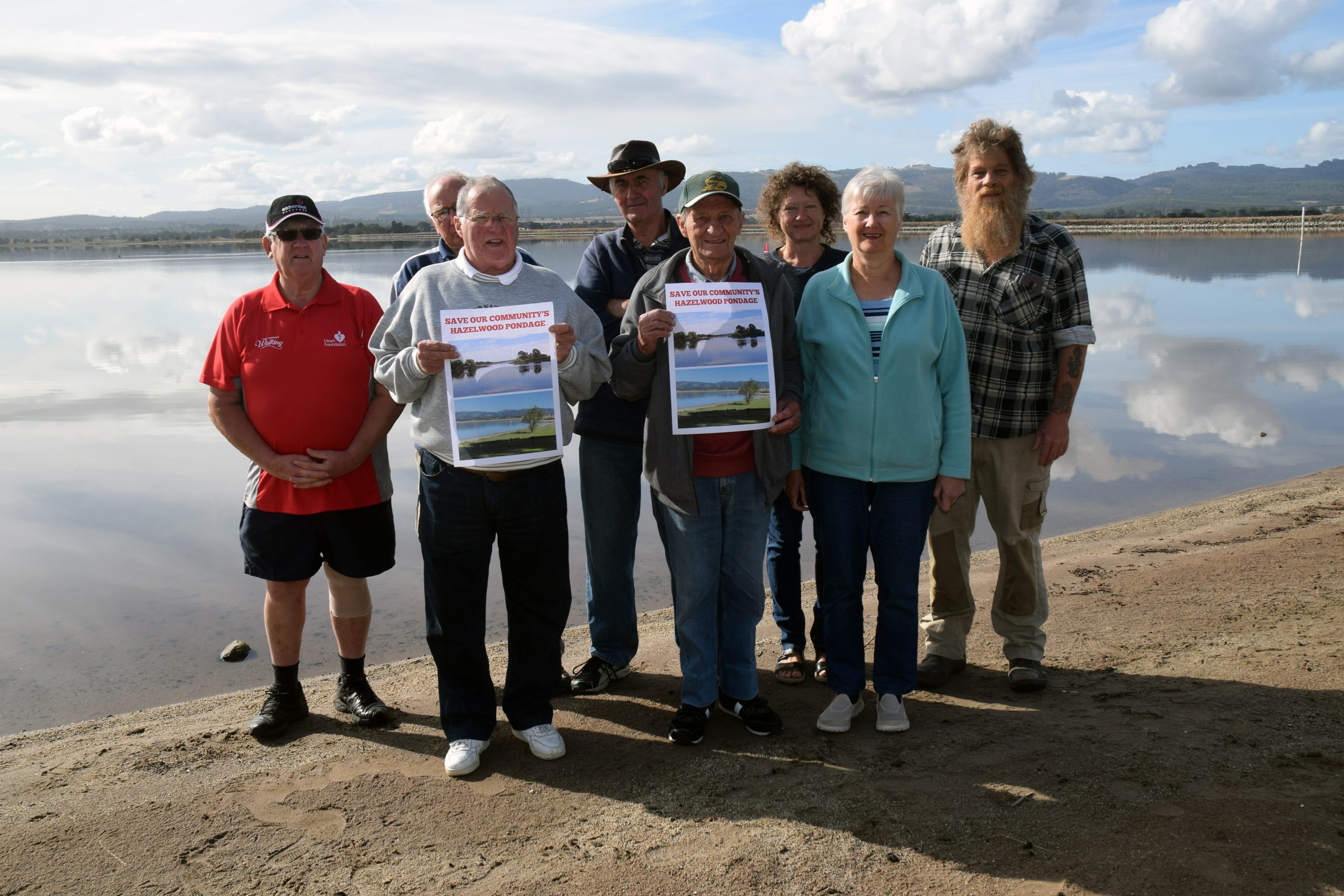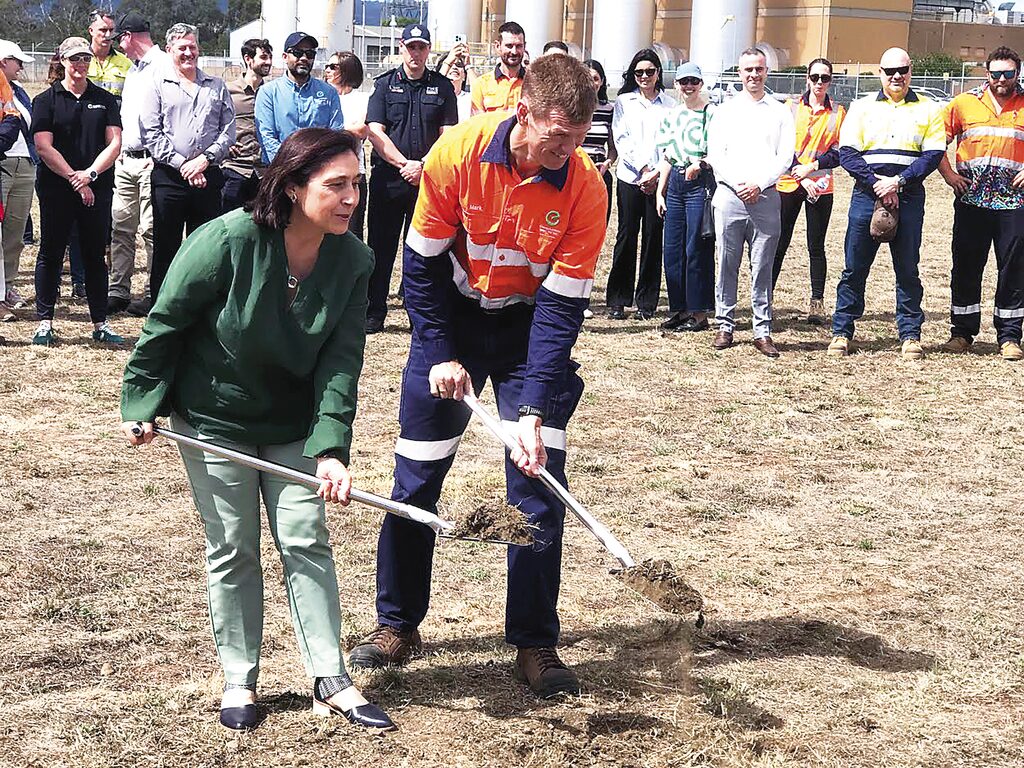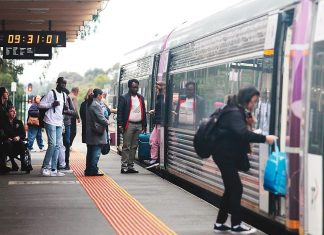By PHILIP HOPKINS
CONSTRUCTION of EnergyAustralia’s $700 million, 350MW battery in the Latrobe Valley was symbolically launched at a major ceremony in Morwell last Friday, February 28.
The 350 MW Wooreen Energy Storage System (WESS), located next to EnergyAustralia’s Jeeralang gas power station at Hazelwood North, will be able to provide power for four hours before needing to be recharged.
The site was chosen for its land availability and proximity to the existing power grid, allowing the efficient integration of the battery into the electricity network. The power can be used either to help stabilise the energy grid due to intermittent renewables, or supply electricity to 230,000 homes over the period.
The Minister for Energy and Resources, Lily D’Ambrosio, and EnergyAustralia’s Managing Director, Mark Collette, symbolically turned the first sod for the battery, which is scheduled to be in operation by 2027. Construction is expected to create about 80 jobs.
Gunairkurnai Elder, Michelle Dow, gave a ‘Welcome to Country’ speech to open the ceremony, then proceeded to a ‘smoking ceremony’ to complete the ceremony.
Mr Collette said EnergyAustralia was honoured to acknowledge the Gunaikurnai Elders, who had gifted the name ‘Wooreen’.
“Wooreen means ‘light’, reflecting the project’s role in illuminating the path towards a sustainable energy future for the region,” he said.
Mr Collette said EnergyAustralia was originally from the Latrobe Valley. Yallourn W Power Station and its Yallourn predecessors had powered Victoria for more than 100 years.
“Engineering is in our DNA,” he said.
But now the energy mix was changing from brown coal-fired power stations to wind, solar, batteries and other firming generation, “which aims to make energy supply reliable and affordable”, he said. The battery would be able to store solar energy at the solar peak during the day, and release it in the evening or morning peak when it was needed.
Mr Collette said Wooreen was the biggest project ever undertaken by EnergyAustralia, whose initial foray into batteries had been two small 25MW and 30MW projects.
These had been a learning curve for the company, which had culminated in the large Wooreen battery project.
“Wooreen is one of the largest energy storage projects in Australia,” he said.
Ms D’Ambrosio said the Wooreen battery would help the Latrobe Valley continue the state’s energy generation powerhouse and allow for more renewable projects to be built in the area.
“Building more battery storage means we can create more renewable energy – for every gigawatt of battery storage built, three gigawatts of new renewable energy can come online,” she said.
Wooreen is part of the state government’s Structured Transition Agreement (STAs) with Energy Australia, which aims to help workers and industry prepare for the closure of Yallourn in 2028. The STAs will focus on helping workers retrain, reskill, and find new opportunities, which includes a tailored worker and supply chain transition programs, a worker transfer scheme.
“Our expansion of training and apprenticeship programs will also create a new pipeline of skilled workers,” she said.
“Victoria is the home to big batteries with 12 currently operational, with another 13 under construction or undergoing commissioning, pushing us towards meeting the first renewable energy storage target of at least 2 gigawatts by 2030.”
EnergyAustralia achieved financial close for Wooreen on February 20, with the investment valued at more than $700 million.
“WE thank the Victorian and Australian governments for their support on this project as they have been instrumental in helping us reaching financial close on WESS. EnergyAustralia looks forward to delivering the Wooreen Energy Storage System by 2027,” EnergyAustralia Managing Director, Mark Collette said.
The battery equipment for WESS will be supplied by Wärtsilä, while EnergyZenviron will deliver the balance-of-plant works. Wärtsilä’s Vice President of Energy Storage & Optimisation, Andrew Tang, flew from San Francisco to attend the opening ceremony. Mr Tang said Wärtsilä was already involved in more than seven gigawatt hours of batteries in Australia.
“We are excited to partner on this significant project and help support their long-term energy goals. Australia has already made great strides towards its decarbonisation targets, and this project will further boost its renewable energy capacity,” he said.
EnergyAustralia is also investing more than $1 million in community benefits during the life of the project. This includes a Light the Way Community Future Fund which will provide $500,000 in grants to local community groups and organisations; $300,000 for First Nations training and capacity building initiatives, and $200,000 for local Country Fire Authority training and resources.











